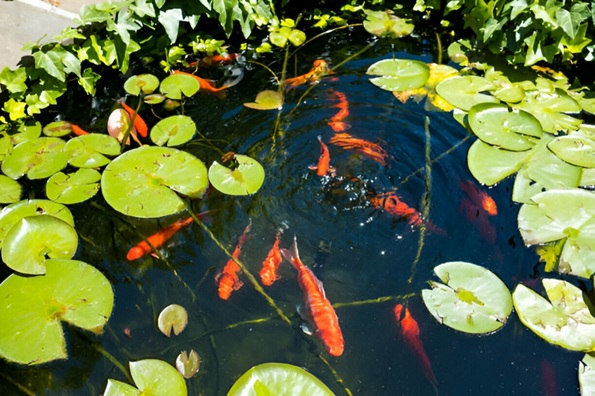Need to oxygenate your pond without electricity? Maybe it is too far from power, lacks outlets, or you want to cut costs. The available energy-free pond treatments help maintain both health and vitality regardless of the reason for pond maintenance.
The survival of a thriving pond depends on oxygen supply no matter what aquatic inhabitants live in its waters. While a pond air pump is a common solution, not everyone has access to electricity near their water feature. Healthy pond preservation methods are available from natural and solar-powered solutions.
The pond care professional That Pond Guy stands by these techniques since they establish pond balance by excluding power connections.
Why Oxygen Matters in Your Pond?
Oxygen in water helps extend water freshness, protects aquatic life, and blocks mosquito colonization and bacterial algae growth. Insufficient water aeration generates three observable symptoms: fish that struggle to breathe near the surface while air becomes unpleasant and water turns hazy green.
A simple oxygen boost should be implemented immediately after detecting these problems because electricity is unnecessary.
1. Harness the Power of Plants
Pond plants are nature’s oxygen machines. Aim to cover at least half of your pond’s surface with a mix of:
- Oxygenators like hornwort (release oxygen underwater)
- Floating plants like water lettuce (shade the water, reducing algae)
- Marginals like irises (add beauty while filtering nutrients)
Plants also provide shelter for fish and reduce sludge buildup.

2. Solar-Powered Fountain Magic
The PondXpert SolarShower operates as a solar-powered water circulation system which functions wirelessly. The device extracts water from low-oxygen areas and directs it above the water level where oxygen absorption occurs.
Models with batteries keep running after sunset, making them ideal for sunny spots. As a result, they double as stunning water features!
3. Solar Air Pumps for Deep Ponds
For deeper ponds, solar air pumps (e.g., PondXpert SolarAir Plus) work like traditional aerators but run on sunlight. The bubbles formed by air stones rise from the floor to deliver bottom-up oxygenation.
These units’ function without electric power and provide an excellent addition to fish ponds or wildlife habitats.
4. Create Natural Water Movement
No pump? No problem! Use these tricks to stir the water:
- Mini waterfalls: Arrange rocks to guide water over small drops.
- Wind-powered stirrers: A simple paddlewheel can churn the surface.
- Manual aeration: Occasionally stir the water with a stick or bucket.
5. Cut Down on Oxygen Thieves
Reduce organic waste that sucks up oxygen:
- Scoop out leaves and debris regularly.
- Avoid overfeeding fish—leftover food decays and depletes oxygen.
- Add beneficial bacteria to break down sludge naturally.
When to Consider a Backup Plan
While these methods work well for small to medium ponds, larger or heavily stocked fish ponds might need a hybrid approach. That Pond Guy recommends combining solar aeration with occasional manual checks to ensure water quality stays high.
Final Thoughts
Maintaining an oxygen-rich pond requires no electricity. With plants, solar energy, and strategic water circulation methods, you can develop an autonomous system that maintains its pristine clarity.




